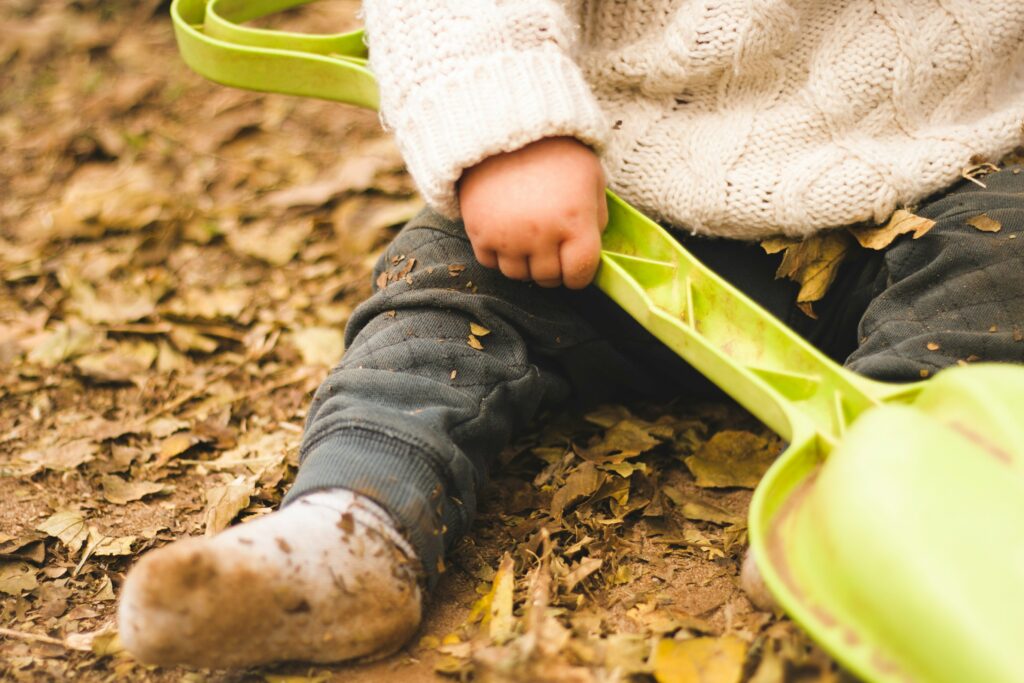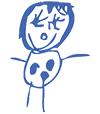EECERA Conference 2025 – Guest Blog # 46: Listen and Learn
Posted 25th August 2025
One of a series of short blog posts by presenters who will be sharing their work at the upcoming annual conference in Bratislava, Slovakia. Any views expressed in this post are those of the author(s) and do not necessarily reflect the official stance of their affiliated institution or EECERA.
Listen and Learn – Pedagogical Development in the Outdoor Environment
By Anita Helseth, Norway Inland University, Norway

Photo by Meghan Holmes on Unsplash
Teaching toddlers in nature is, in our view, an art form. In early childhood education and care institutions (ECECi), supporting toddlers’ learning is complex, particularly when teaching unfolds outdoors. Teachers cannot anticipate every situation; they must therefore be both knowledgeable in subject matter and highly adaptive, attuned to spoken and unspoken communication.
The Scandinavian tradition of friluftsliv encourages a holistic pedagogy fostering nature connectedness, knowledge, and wellbeing. Here, learning is relational, lived, and situated—carried by wind, weather, and wonder, not confined to a desk. Nature functions as a living classroom where cognitive, social, and physical domains intersect through multisensory experiences. When nature becomes a co-teacher, curiosity is ignited, attention deepened, and understanding enriched through real encounters with creatures, materials, and forces.
Being a genuine learning partner in scaffolding toddlers’ development is central. “Listen and learn” signifies treating attention as a professional practice—tuning into gestures, rhythms, silences, and the micro-narratives of play, while also reading the rhythms of the natural world. Van Manen’s notion of pedagogical tact—knowing when to intervene and when to hold back—is essential. When a child traces spirals in mud, an educator may name the pattern, pose open questions, or simply allow repetition and reflection. This responsiveness dignifies children’s initiatives and opens pathways for authentic learning.
In the Nordic countries, friluftsliv is both ethos and method. Regular, unhurried visits to natural environments across seasons deepen attachment to place and encourage care for the environment. Learning to notice the first spring flowers, the sound of ice fracturing, or insects hidden among leaves builds resilience, stewardship, and ethical awareness. Repeated, meaningful encounters enable children not only to know about nature but also to feel connected to it.
Such environments provide rich opportunities for embedded learning. Leaves tessellate, puddles invite estimation, and slopes encourage discussions of gradient, while cones collected in buckets lend themselves to sorting and counting. Educators may enrich these encounters with purposeful vocabulary—“under,” “longer,” “heavier,” or “closer.” Simple activities such as “measuring” walks in footsteps make abstract concepts tangible, building early mathematical thinking through playful, sensory engagement.
A particular strength of friluftsliv for toddlers is freedom of movement, climbing and balancing on natural structures. Movement supports cognition; negotiating roots or logs challenges coordination, fosters collaboration, and requires turn-taking. Motor development, mathematical reasoning, language learning, and nature awareness intertwine as children test strategies in action, narrating discoveries with support from peers and teachers.
Teaching outdoors, however, demands much of ECECi staff. Indoors, conditions can be controlled, whereas outdoors, the environment is dynamic and unpredictable. Weather shifts, animals appear and vanish, and children inevitably slip, become muddy, or require clothing adjustments. A single insect crawling across a “castle” stone may redirect attention entirely. Teachers cannot prepare for all possibilities; they must continuously assess risks, make rapid judgments, and ensure the well-being and engagement of all children. This requires subject knowledge, familiarity with each child’s
abilities, and the capacity to adjust support on the spot.
To explore how reflective practice enhances competence in outdoor pedagogy, we ran a pilot programme. ECECi students were asked to listen back to audio recordings of their teaching sessions, produce transcripts, and write reflective notes throughout the autumn term (2024). All material was also securely stored and transcribed using the SRT tool. The pilot focused on three strands:
1. Whether questioning skills developed during the unit;
2. How subject-specific content in mathematics, science, and physical education was used appropriately in context;
3. Whether students employed waiting time deliberately.
In addition, we collected students’ self-appraisals as “with-wonderers” through written reflections and interviews. The central aim of Listen and Learn is to develop reflective listening as a catalyst for
transformative pedagogical practice in outdoor learning. It functions both as a mantra and as a professional development tool, emphasising refined listening, concept-rich language, and the ability to observe, interpret, and respond effectively. Attentive listening—to children, nature, and one’s own practice—sharpens pedagogy and supports professional growth.
In conclusion, teaching toddlers outdoors demands subject expertise, practical skill, adaptability, and focus. The natural environment is not just a backdrop but a co- teacher—offering boundless opportunities for curiosity, connection, and meaningful learning.
Anita Helseth will present work referred to in this blog in Symposium Set B11 | Tuesday 26th August 2025 (Schedule liable to change; please refer to final programme for details).
Contributors:
Christine Seehuus christine.seehuus@inn.no
Jon Anders Græsli jon.grasli@inn.no
Anita Helseth anita.helseth@inn.no
